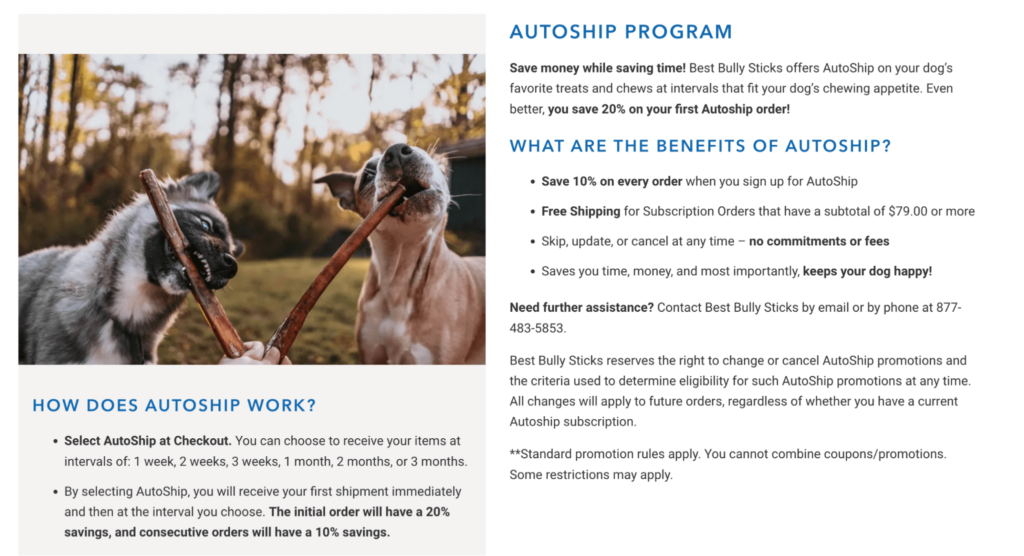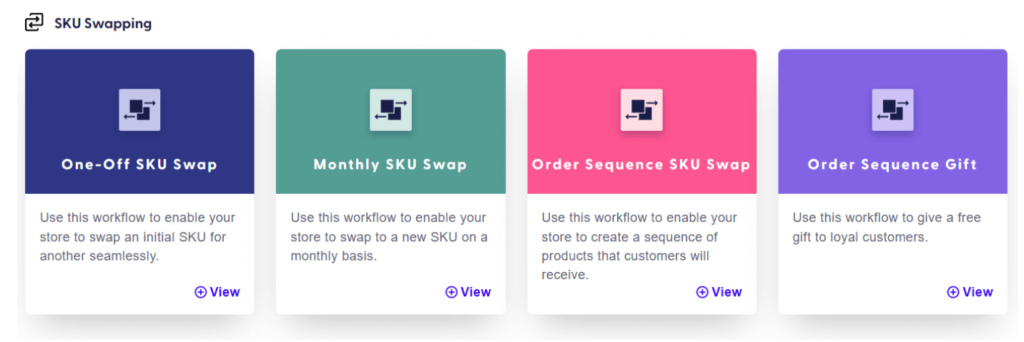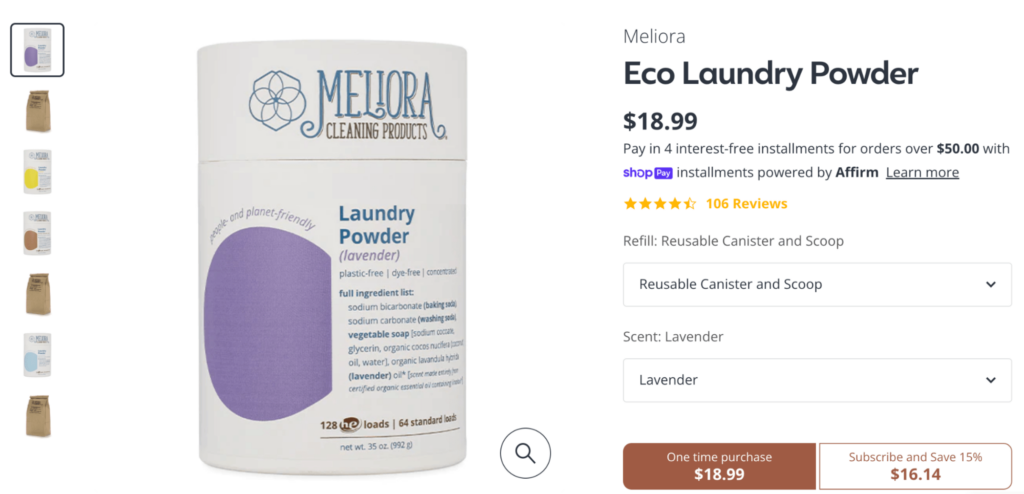Direct-to-consumer (DTC) businesses have revolutionized the retail industry in recent years. With the growth of ecommerce and social media, more and more businesses are choosing to sell directly to their customers rather than through traditional retailers.
As a side effect, new technologies have surfaced that have made optimization much more accessible to merchants at every stage of growth. Workflows are an example of this and can be a pivotal instrument in optimizing your subscription program and elevating your brand.
Key takeaways
- Workflows tools are used to automate processes to increase operational efficiency and improve on key performance indicators (KPIs).
- There are two types of workflows: checkout and recurring.
- Workflows are most advantageous when implemented strategically according to your key focuses at your present growth stage.
What is a workflow?
TechTarget defines a workflow as a “series of activities that are necessary to complete a task.” When it comes to the ecommerce space, workflows are generally leveraged in automations and are fundamentally built on scripts and code.
For example, Recharge has a specific Workflows tool that is used to automate actions that occur after an initial order is made to modify any subsequent order throughout the subscription lifetime. These workflows take the place of a person manually making these changes to each relevant order, reducing customer support debt and increasing the overall efficiency of business processes.
Structurally, workflows have four components:
- The trigger that signals the automation to fire
- The conditions that must be met for the workflow to apply
- The search function that checks if the order that triggered the workflow meets the conditions specified, and which aspect of the order must be affected as a result
- The action that is taken to modify the next order in the sequence
When used strategically, workflows not only improve the overall operational efficiency of a business, but also enable businesses to improve in key metrics like customer acquisition and churn prevention.
Types of workflows & when to use them
While the distinction between the types of workflows might seem straightforward, it’s important to understand their differences to determine which to use in particular scenarios and the nuances of each.
Checkout workflows
Checkout workflows occur only once, as the name suggests, when the first order is created in the store at checkout. Once this type of workflow is triggered, all remaining recurring orders in the subscription are affected by the action in the workflow as long as all the conditions are met.
These kinds of workflows are often used in customer acquisition, where the first order is often incentivized in order to capture a new subscriber that must then be changed after conversion.
For example, offering a trial size of a product to start off a subscription can reduce the barrier to customer conversion. A workflow could be used in this instance to swap the trial size SKU to the full size SKU after the first order.
Recurring workflows
Recurring workflows are normally used in retention strategy and churn prevention, and are triggered by a specific or any recurring order in the subscription lifetime. Often, you will see recurring workflows implemented as part of a loyalty program or incentive to keep customers ordering.
Something to think about with recurring workflows: You need to consider whether an additional workflow is needed to reverse or modify the changes that were made to the affected order once it processes.
For example, if a workflow is used to provide free shipping on a customer’s third order but you don’t want shipping to be free after that, you’ll need two workflows: one that changes the shipping to free after the second order processes, and an additional workflow to change the shipping back to normal that is triggered once the third order processes. This ensures that the fourth order and any onward charges apply the correct shipping amount again.
Creating a workflow strategy
With the understanding of the what, why, and when to use workflows, businesses can plug workflows into their strategy at key stages in their growth cycle based on metrics and KPIs they are focusing on.
For the purposes of workflow ideation, we’ll divide businesses into three categories: just starting, growing, and scaling.
For the business that’s just starting
For businesses that are just starting, key focus areas are often on acquisition and exposure. Businesses in this stage are generally looking to build their subscriber base from zero or a few subscribers to an amount that will allow the business to eventually generate profit and begin building out their brand presence.
A shipping workflow is often utilized by merchants at this stage as a method of incentivization. They will entice customers to subscribe and save on shipping costs to remove the “pain tax” that often deters potential customers from converting when it comes to the psychology of shopping.

Merchants at this stage will often work the cost of shipping into the product price that is offered through their subscription program to present it as free or reduced, while adding an additional cost for shipping on one-time purchases. This is normally a checkout workflow that changes the cost of shipping to zero after the initial order is processed.
For the business that’s growing
For businesses that are growing, key focus areas are often a mix between acquisition and retention. They want to continue building upon their subscriber base but have already developed a decently sized one for their business goals, and are now looking to improve the retention of their subscribers and lifetime value (LTV).

A Surprise and Delight workflow is an example of a recurring workflow that is often used in retention strategy to encourage positive customer behaviour and increase LTV. Merchants can use their analytics to identify which point in the subscription journey they notice a significant drop-off in customers, and strategically place a free gift or reward there to entice them to stick around longer.
This data-driven workflow example increases the average LTV of customers while also fostering a positive customer experience and brand loyalty.
For the business that’s scaling
Lastly, for businesses that are scaling, key focus areas are often on optimization and automation. Since these brands are established, the strategy usually shifts to decreasing overhead costs in order to increase the margin of profit by incremental percentages—which, at this growth stage, equals a lot more dollars. They also rely on automations to refine the brand’s presence and reputation and curate a seamless shopper journey.

A SKU Swap Workflow is an example of a workflow that is used by merchants at this stage. Businesses at scale are better resourced to offer sustainability as a key component of their brand. For example, this can be done by offering refills through subscription where the first order contains the product’s reusable packaging. All of these contribute to a personalized customer experience for their target demographic.
In these cases, a checkout workflow can be used to swap from the first order SKU that contains the reusable packaging and filling, to a different SKU that contains only the refill.
Let workflows do the work for you
Remember that while workflows simplify a lot of things, they only really work as well as you’ve strategically implemented them—the mind of the people behind implementation is where the real magic happens. This is why it’s important to plan for the future and attach workflows to measurable KPIs so you can evaluate whether the workflow is working in your favour and cultivating the desired results.
Sources
[1] Direct-to-consumer (Recharge ecommerce glossary)
[2] Workflow (Definition)
[3] Workflows by Recharge (Support documentation)
[4] Is Free Shipping Sustainable for Retailers? (Podcast)
[5] Lifetime Value (Recharge ecommerce glossary)



